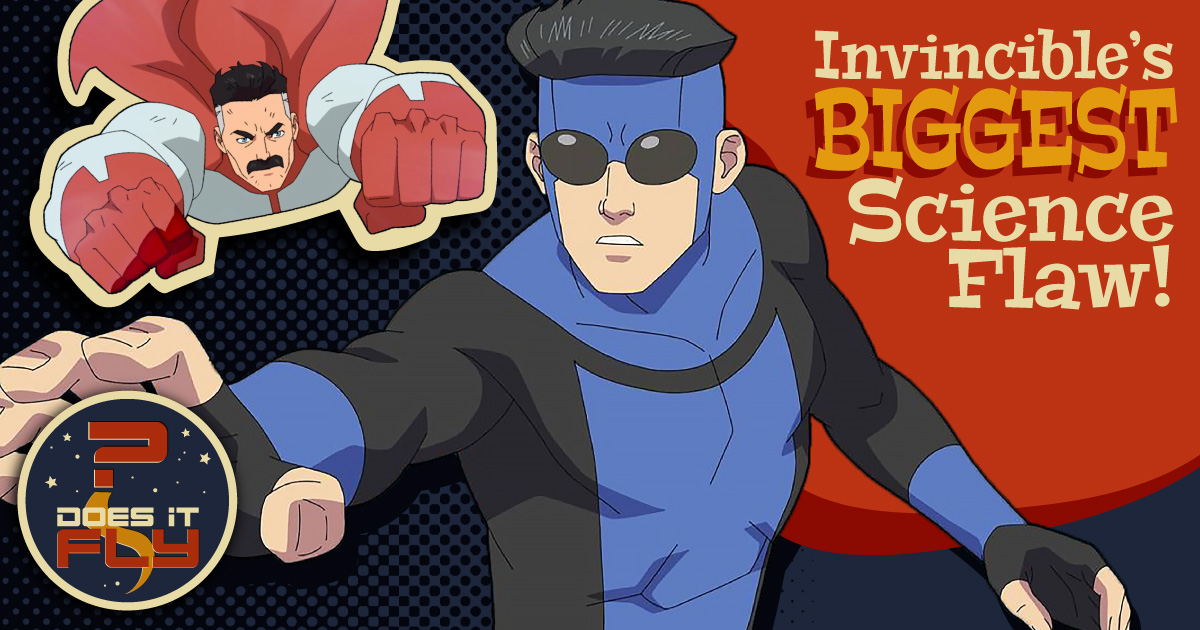Could the 3 Body Problem Headset Work in Real Life?
We ask the question raised by Netflix’s 3 Body Problem: Is it possible to create a headset that can hijack the human brain?
Wait…don’t we already have VR headsets? Not like the ones in Netflix’s 3 Body Problem, we don’t! We’re diving headfirst into one of the most talked about sci-fi TV hits of the year to unpack just how close to reality wearable tech like this show’s (dangerous) headset might be. Spend some time with us as we look at parallels with modern neurotechnology, and stick around to learn who Hakeem and Tamara’s favorite scientists are. And what does Copernicus have to do with all this, anyway? All this and more in the latest episode of Does it Fly? now available everywhere.
SUGGESTED VIEWING
We’re switching the order up this week, because, really…we’re assuming you’ve already watched 3 Body Problem on Netflix. But just in case you haven’t…get going! We’ve already spoiled chunks of it for you!
Anyway, you’re lucky the viewing section is so light (compared to the massive amounts of homework we assigned for our Planet of the Apes episode last week) because there’s some cool reading to go along with this week’s episode…
FURTHER READING
Do you want to delve a little deeper into the facts, concepts, and stories Hakeem and Tamara referenced in today’s episode? Here are a few recommendations!
If you enjoyed the show, you’ll want to check out the books that it’s based on, known as the Remembrance of Earth’s Past trilogy Liu Cixin. Those books are The Three-Body Problem, The Dark Forest, and Death’s End. A perfect way to pass the time while you wait for future seasons of 3 Body Problem on Netflix!
Now as for the science end of things…
“We’re not talking about that today!” (OK, fine, it’s the wrong three-body problem, but it’s still pretty cool, so check out the link.)
“That [VR headset as seen in Netflix’s 3 Body Problem] falls under a somewhat mature now, but definitely super-active field of research and development called neurotechnology. These are brain-human interfaces that occur in numerous ways. And right now, they’re being used mostly for good, not for planetary invasion….”
“…There’s basically three ways we can interface with the brain: magnetic fields, light, and magnetic resonance imaging [see also: MRI] The thing here is the wireless ones are all high resolution/large volume, but they don’t have the same degree of specificity as the implants [see also: Neuralink]. So that’s where we exist right now, where you can modulate brain activity. This is really good for paraplegics, where they have a system that’s mounted on their skull [see also: BCI].
SQUID (superconducting quantum interface device)
“Squids are these amplifiers, or incredibly sensitive detectors. They can detect something like a single photon of very low energy.”
“Branded as a heretic for daring to suggest that the entire universe does not revolve around the Earth, but that the Earth revolves around the sun, which I think is a great metaphor for humanity, which is discovering that the Earth is not figuratively the center of the universe and that there are other folks out there.”
Winner of the inaugural Tamara’s Favorite Scientist award on DiF! See also: The Harvard Computers
Winner of the inaugural Hakeem’s Favorite Scientist award on DiF!
And here’s some bonus reading for you that deals with the tech as it appears on the show…
3 Body Problem’s Headset Is Not the VR We Want – It’s Our Worst Nightmare
3 Body Problem’s VR Tech Got a Big Glow-Up from the Books
3 Body Problem VR Headset Review: Magical Tech In Need Of More Apps
WANT MORE FROM DOES IT FLY?
The new era of Doctor Who is in full swing on Disney+ right now, so in case you missed it, now would be a great time to revisit our Who-centric episode about the TARDIS!
And for everyone keeping up with Star Trek: Discovery every Thursday (as well as Trek fans of all kinds) we broke down the plausibility of the transporter right here.
FOLLOW US!
Stay in the loop! Follow DoesItFly? on YouTube and TikTok and let us know what you think!
And don’t forget to follow Roddenberry Entertainment:
Instagram: @RoddenberryOfficial
Facebook: Roddenberry
Twitter: @Roddenberry
*Roddenberry Entertainment participates in affiliate programs and may receive a small commission for links on this page*
For Advertising Inquiries: doesitfly@roddenberry.com
MORE EPISODES

Why Invincible Isn’t Realistic
There’s one big reason why Invincible season 3 will never be the realistic superhero animation that it truly wants to be…

The Real Magic of the Original Crow Movie
The concept of the magical familiar is a common one in fantasy fiction, but it was used to unique effect in 1994’s The Crow movie. As it turns out, if you’re looking to pick a familiar, crows might just be the ones you want watching your back!

The Terrifying Real World Implications of Squid Game
Netflix’s Squid Game is full of disturbing life or death situations, but “Red Light, Green Light” might be the one closest to our real world…and all the problems that come along with that.


